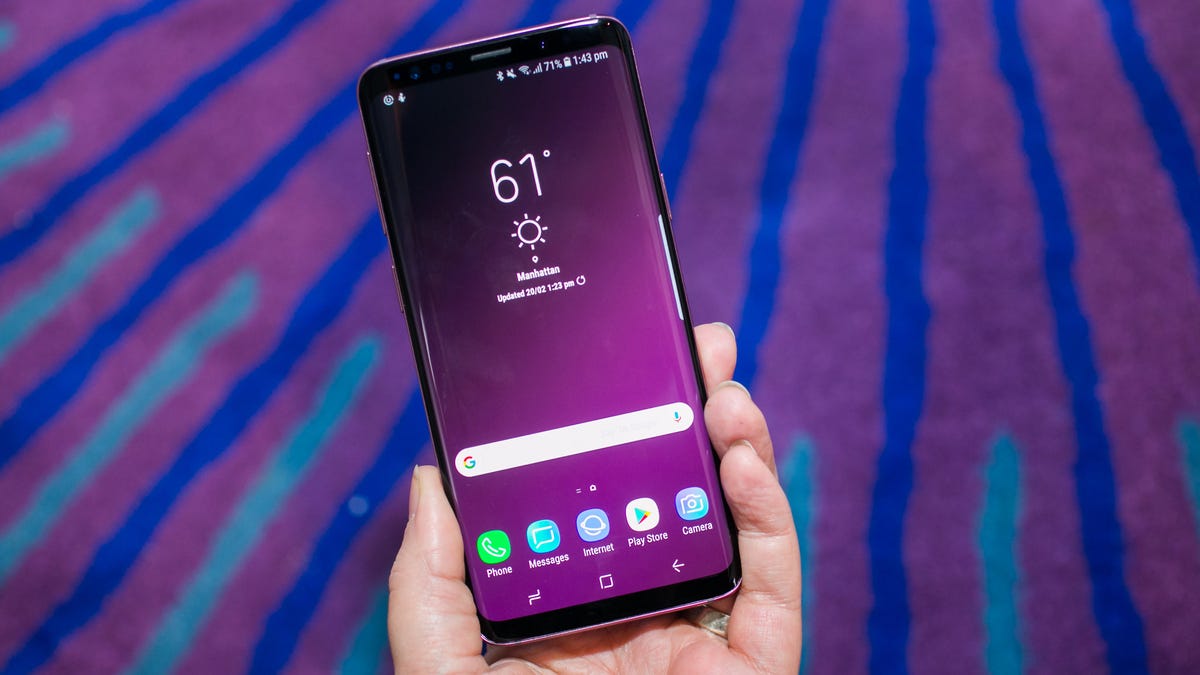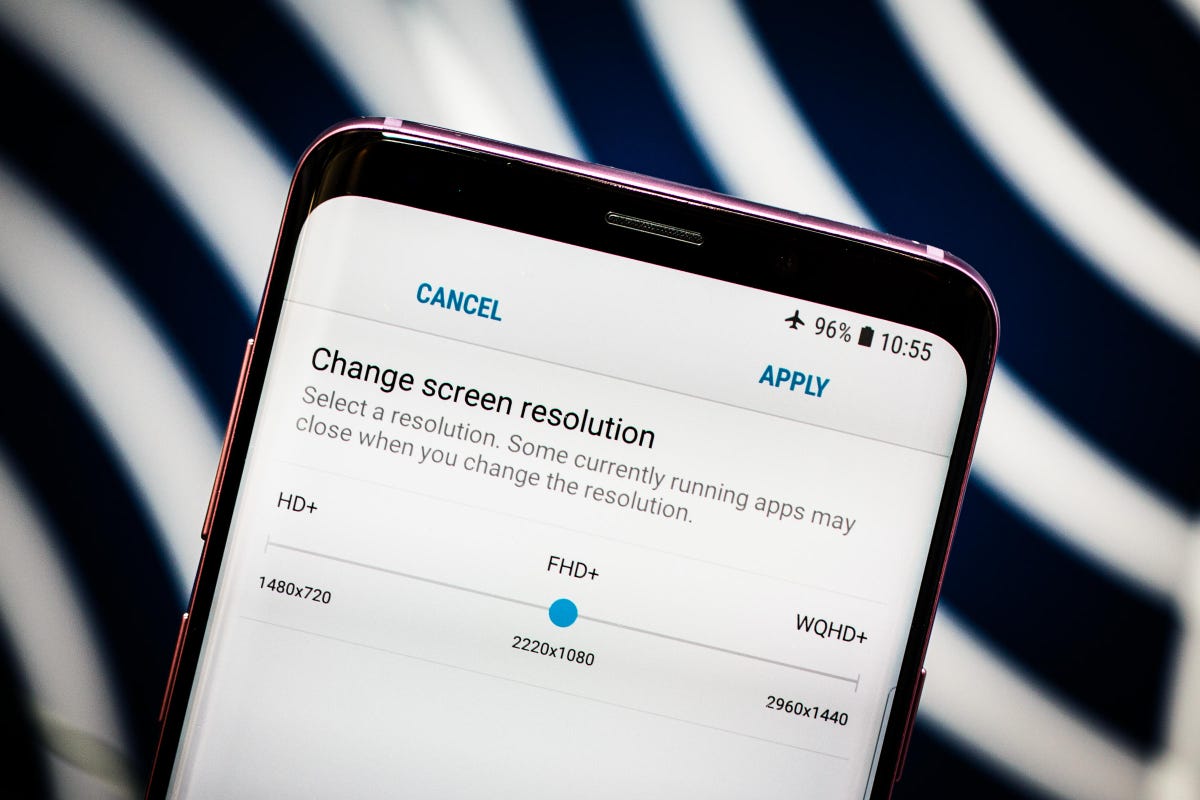
Black, schmack. Samsung's Galaxy S9 and S9 Plus go bold in purple and blue -- yes, yes, in addition to black and gray colors, too.
The purple looks especially impressive in person, and comes to both S9 phones. Not all colors will be available in all regions.
The Galaxy S9 and S9 Plus, shown here in coral blue, share most of the same hardware guts. The S9 Plus is the larger of the two.
The Galaxy S9 Plus also has one special feature that the S9 doesn't: a second camera on the back.
Both phones run Android 8.0 Oreo.
The best design change? That fingerprint reader moves below the camera array.
That's a big improvement from where it was on the Galaxy S8 and Note 8 (pictured), to the right of the camera.
The phones also get a sound enhancement. Audio pours out of the speaker and a microphone at the bottom of the phone.
While the S9 Plus has two rear cameras, both phones have a unique dual-aperture lens. The settings automatically adjust for brighter low light photos.
The curved edges are less pronounced than on past Galaxy phones.
Both the 5.8-inch Galaxy S9 and 6.2-inch Galaxy S9 Plus have slightly curved AMOLED screens with high resolution displays that reach a maximum of 2,960x1,440 pixels.
Samsung says its headphone jack isn't going anywhere.
Both phones carry on the tradition of wireless charging...
...and waterproofing with an IP68 rating. You'll be ale to submerge it for up to 30 minutes at a depth of up to 3 feet (1 meter) without damaging the phones.
The SIM card tray shares space with a microSD card slot, which holds up to 400GB storage.
Both the S9 and S9 Plus from the back.
You can really see the size and camera differences here.
A look at the USB-C and headphone port of both phones.
What's this? A teaser. You'll see...
Let's jump into some camera specs.
Both cameras have heaps of features, including that dual aperture, which physically changes the camera settings to improve low light.
Portrait mode, called Live Focus, is alive and well on the Galaxy S9 Plus.
You can adjust background blur with a slider control.
Sliding the shutter button with your finger or thumb zooms you in and out.
There's only one front-facing camera on the Galaxy S9 and S9 Plus, but you can still take a portrait shot using a new tool called Selfie Focus.
Peer closely and you can see the background blurred out.
Samsung phones had slow motion video before, but the new super slow motion video -- which captures 960 frames per second -- makes videos shot on the S9 and S9 Plus far more dramatic.
Remember that teaser from before? This is AR Emoji, Samsung's take on the iPhone X's animojis. They're animated GIFs you can create based on a 2D map of your face, taken with the front-facing camera.
Sharing GIFs and videos of yourself is a cute idea, but they're less than faithful representations of the real thing.
You can edit your avatar...
...and just add plain old stickers on top of your face.
Your avatar doesn't even need to be human.
There's also this.
You can record a video of yourself talking, and also let the AR Emoji tool create 18 animated GIFs that you can include in any message or app that supports the format.
Here's an example in Samsung's messaging app.
Also in the camera is Bixby Vision, Samsung's optical recognition tool, which adds the ability to count calories in the food seen through the viewfinder.
Samsung has also teamed up with Sephora and Cover Girl on a digital makeup app. Beeeyootiful.

One thing to note: The S9 and S9 Plus screen aren't set by default to the highest resolution setting, in order to save battery life.
Click or swipe through for even more images of Samsung's new Galaxy S9 handsets.
All four colors: lilac purple, titanium gray, coral blue and midnight black.
The Galaxy S9 Plus and Google Pixel 2 XL.
The Galaxy S9 Plus compared to the iPhone X.
The new Dex Pad helps turn the phone into a mobile workspace.
Like what you've seen so far? Read our full Galaxy S9 review for all the ins and outs.


